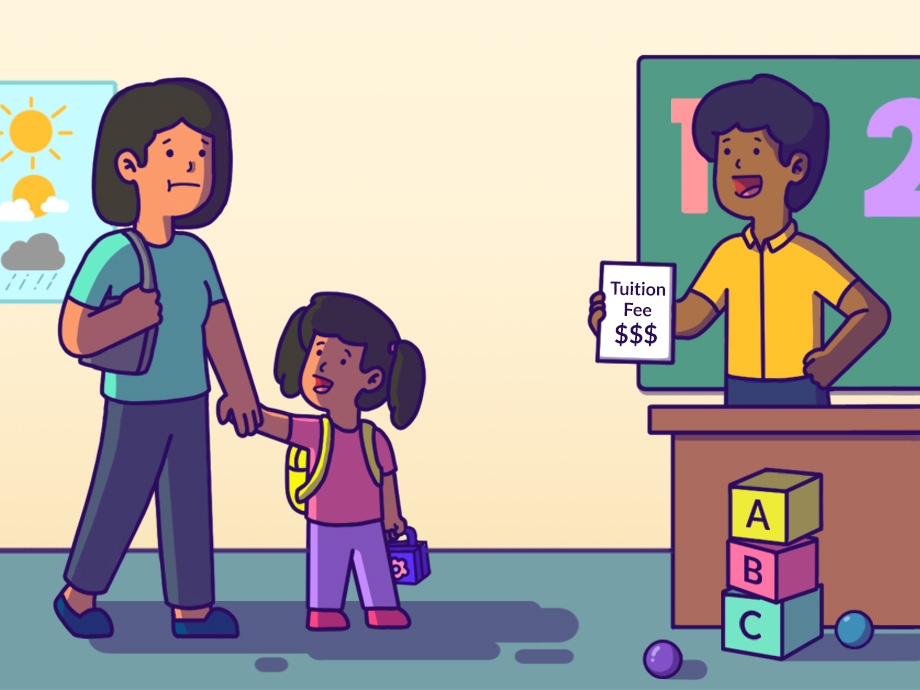Financial Planning | Life | Personal Finance | Relationships & Family | Article
Here’s What You Need to Know About Saving For Your Child’s Education
by Ooi May Sim | 26 May 2022 | 6 mins read

In today’s competitive job climate, getting a higher education has become a requirement instead of an advantage. Tertiary education is often viewed as one of the best investments a parent can give their child. But this “investment” doesn’t come cheap.
And the cost of education keeps increasing every year. For example, a Bachelor of Computer Science (Data Science) at Universiti Malaya that costs RM20,020 today could go up to over RM36,158.35 in 20 years (this takes into account an average of 3% annual inflation).
There have even been reports of tuition fees being raised by between 10% and 60% year-on-year. This is just the school fees — it doesn’t even include the cost of living and books. You have to increase your budget if you plan to send your child abroad to study.
As such, an increasing number of parents have had to turn to their savings and even dipped into their retirement funds to pay for their children’s education.
While these numbers look daunting, the good news is that reaching this financial milestone is achievable, with the right long-term planning. Remember, the earlier you start, the better, as you’ll have the advantage of time and compounding interest.
Related
Types of education plans
Skim Simpanan Pendidikan Tinggi Nasional (SSPN)
The national education savings scheme was designed by Perbadanan Tabung Pendidikan Tinggi Nasional (PTPTN) to help Malaysians save for higher education.
PTPTN, which was set up in 1997, initially gave out student loans to help Malaysians fund their tertiary education. But the agency realised that students borrowing from PTPTN would be bogged down by student debt upon graduation when they begin repaying their loans.
Hence SSPN was birthed in 2004 with the aim of reducing or removing student debt. SSPN helps parents start saving for their child’s tertiary education early; it can be taken from the time their child is a day old.
SSPN savings is Shariah compliant and follows the concept of Wakalah Bil Istithmar, which allows a financial institution to manage funds on behalf of their customers. Having a SSPN account is also a requirement for students who want to apply for a PTPTN loan.
There are two options to choose from – SSPN Prime and SSPN Plus (formerly known as SSPN-i and SSPN-i Plus). Both SSPN Prime and SSPN Plus are savings instruments. The main difference is that SSPN Plus has added Takaful (insurance) coverage, hence there is a fixed monthly commitment requirement.

Here’s a breakdown of what each scheme has to offer:
1. SSPN Prime
- No monthly commitments. Parents can deposit any amount, at any time.
- Parents can get tax relief for the amount they contribute to SSPN (capped at RM8,000 and only applicable for one individual, or for joint tax declaration).
- Free Takaful insurance coverage upon death or permanent disability with a minimum deposit of RM1,000.
- You can withdraw your money any time.
2. SSPN Plus
- Monthly payment according to the package you sign up for. There are six plans to choose from: Intan (RM30 /month), Delima (RM50/month), Topas (RM100/month), Zamrud (RM200/month) Nilam (RM300/month) and Berlian (RM500/month).
- Takaful benefits of up to RM1.2 million, which includes coverage for terminal illnesses, outpatient treatment, and death benefits for depositors and their child.
- Parents can get tax relief of up to RM8,000 (only one individual, or if the couple does joint tax declaration, based on the current year’s SSPN contribution) and a maximum of RM3,000 tax relief from the Takaful contributions.
- You can only withdraw your money three years after opening an account. You also need to have a minimum of RM1,000 in your account.
Benefits of both schemes
Savings are guaranteed by the Malaysian government, so parents need not worry about losing their money. There is also a matching grant of up to RM10,000 for families with a combined income of RM4,000 and below. Here, the government will double whatever savings you put in.
And in any investment, you are looking at growing your money. SSPN offers competitive annual dividends: The dividend for 2021 was 3%, while the average dividend for the past 10 years (2012 to 2021) is 3.98%. The best part is that dividend income derived from SSPN is exempted from income tax.
Related
Insurance-linked education policies
There are two basic types of education plans – endowment and investment-linked, and here are what each one comprises.
1. Endowment policies:
- Combines savings and insurance coverage.
- Policy holders would need to make fixed payments at regular intervals.
- These policies are often a low-risk way to invest and comes with guaranteed returns.
- Upon maturity, a lump sum would be paid out.
2. Investment-linked policies (ILPs)
- Combines investment and insurance coverage.
- Policy holders would need to make fixed payments at regular intervals.
- Premiums are used for investment purposes. Well-performing funds could earn special dividends and bonuses, which would be paid out when the policy reaches maturity.
- The policy holder bears the full investment risk and there are no guaranteed returns.
- ILPs are generally riskier to maintain than endowment policies.
Benefits of having an education policy
The most attractive advantage of having an education policy is the maturity benefit given at the end of the policy’s term, or upon the maturity of the child. This often comes in the form of a lump sum payment. Different insurance and financial institutions have different bonus pay outs and tenures, so you would have to check with each to get the best deals.
Plus, as these policies are tied to insurance, the money for your child will still be protected should something bad happen to you. For example, if a policy holder passes away before the policy matures, a death benefit will be paid out at the time of death.
Cons of having an education policy
If you are looking to sign-up for an education policy, you should be committed long-term. The average duration for a policy is about 18 years, so your money will be locked away for a very long time.
Furthermore, if you miss your payments or do not pay your premiums, your policy might lapse, and you may not receive the entire benefits, or your policy might be deemed null and void.
An educated future
The beauty of having an education plan is that it grows your money in a low-risk setting, giving you a reliable source of savings to bank on when your child is ready for tertiary education. Plus, the plans always come with some perks such as tax relief benefits that make it even more attractive.
However, as this is a long-term investment, it is important to plan and understand what you are getting into before you commit.


















